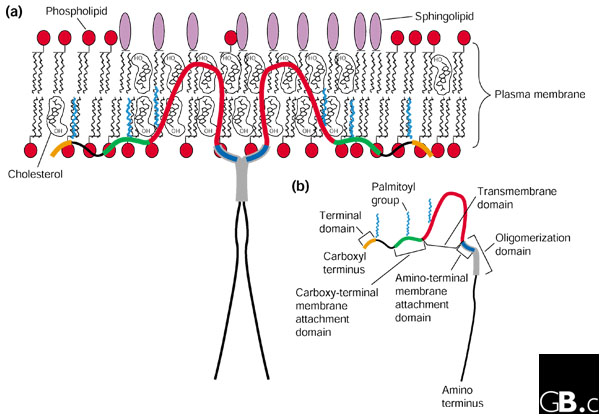Caveolin-2 is a member of the caveolingenefamily with no identified perform. Although caveolin-2 is coexpressed and heterooligomerizes with caveolin-1 in lots of cell varieties (most notably adipocytes and endothelial cells), caveolin-2 has historically been thought of the dispensable structural associate of the broadly studied caveolin-1.
We now straight handle the purposeful significance of caveolin-2 by genetically focusing on the caveolin-2 locus (Cav-2) in mice. In the absence of caveolin-2 protein expression, caveolae nonetheless kind and caveolin-1 maintains its localization in plasma membrane caveolae, though in sure tissues caveolin-1 is partially destabilized and reveals modestly diminished protein ranges.

Despite an intact caveolar membrane system, the Cav-2-null lung parenchyma reveals hypercellularity, with thickened alveolar septa and a rise within the quantity of endothelial cells. As a end result of these pathological adjustments, these Cav-2-null mice are markedly train illiberal.
Interestingly, these Cav-2-null phenotypes are equivalent to those we and others have lately reported for Cav-1-null mice. As caveolin-2 expression can be severely diminished in Cav-1-null mice, we conclude that caveolin-2 deficiency is the clear wrongdoer on this lung dysfunction.
Our evaluation of a number of totally different phenotypes noticed in caveolin-1-deficient mice (i.e., irregular vascular responses and altered lipid homeostasis) reveals that Cav-2-null mice don’t show any of these different phenotypes, indicating a selective position for caveolin-2 in lung perform. Taken collectively, our knowledge show for the primary time a selected position for caveolin-2 in mammalian physiology unbiased of caveolin–
BACKGROUND
Heritable and idiopathic pulmonary arterial hypertension (PAH) are phenotypically equivalent and related to mutations in a number of genes associated to reworking progress issue (TGF) beta signaling, together with bone morphogenetic protein receptor kind 2, activin receptor-like kinase 1, endoglin, and moms towards decapentaplegic 9. Approximately 25% of heritable instances lack identifiable mutations in any of these genes.
RESULTS
We used complete exome sequencing to check a 3-generation household with a number of affected relations with PAH, however no identifiable TGF beta mutation. We recognized a frameshift mutation in caveolin-1 (CAV1), which encodes a membrane protein of caveolae ample within the endothelium and different cells of the lung. An unbiased de novo frameshift mutation was recognized in a baby with idiopathic PAH. Western blot evaluation demonstrated a discount in caveolin-1 protein, whereas lung tissue immunostaining research demonstrated a discount in regular caveolin-1 density throughout the endothelial cell layer of small arteries.
CONCLUSIONS
Our research represents profitable elucidation of a dominant Mendelian dysfunction utilizing complete exome sequencing. Mutations in CAV1 are related in uncommon instances with PAH. This might have vital implications for pulmonary vascular biology, in addition to PAH-directed therapeutic improvement.
Polymerase I and transcript launch issue (PTRF)/Cavin is a cytoplasmic protein whose expression is compulsory for caveola formation.
Using biochemistry and fluorescence resonance vitality transfer-based approaches, we now show {that a} household of associated proteins, PTRF/Cavin-1, serum deprivation response (SDR)/Cavin-2, SDR-related gene product that binds to C kinase (SRBC)/Cavin-3, and muscle-restricted coiled-coil protein (MURC)/Cavin-4, varieties a multiprotein complicated that associates with caveolae. This complicated can constitutively assemble within the cytosol and affiliate with caveolin at plasma membrane caveolae.
Cavin-1, however not different cavins, can induce caveola formation in a heterologous system and is required for the recruitment of the cavin complicated to caveolae.
The tissue-restricted expression of cavins means that caveolae might carry out tissue-specific features regulated by the composition of the cavin complicated. Cavin-Four is expressed predominantly in muscle, and its distribution is perturbed in human muscle illness related to Caveolin-3 dysfunction, figuring out Cavin-Four as a novel muscle illness candidate caveolar protein.
